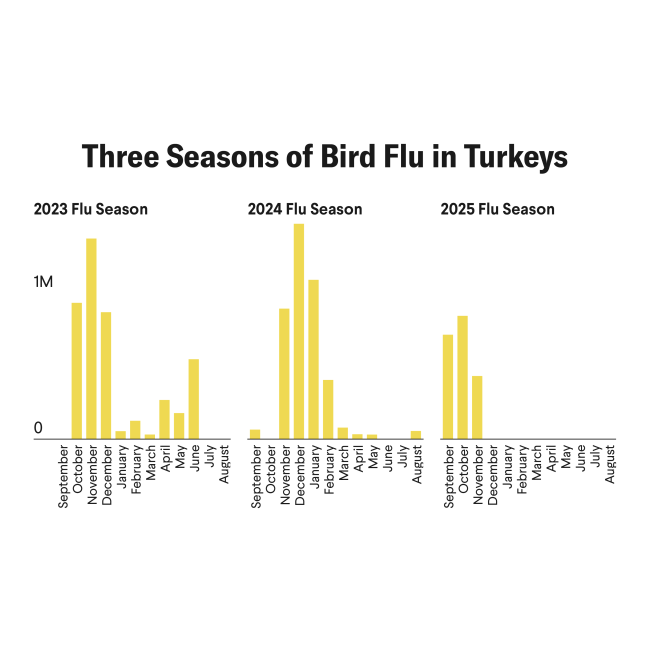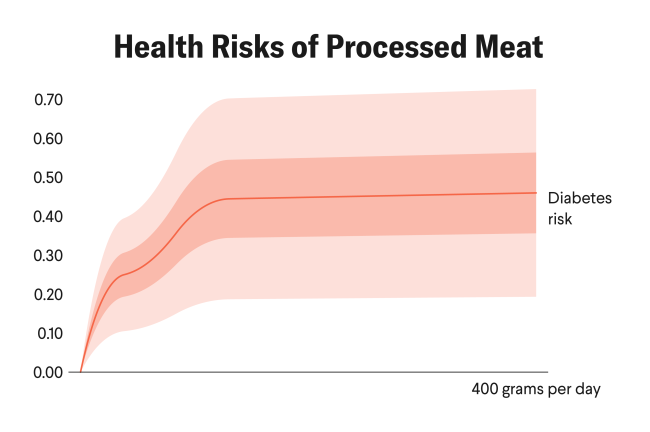Walking through a community in rural Haryana, India, the signs of economic development are unmistakable– new pickup trucks, washing machine, refrigerators, paved driveways. One better-off family has all four.
The family's cheerful five-year-old daughter runs up. Her family has the means to afford plenty of healthy food, but she is strikingly stunted from undernutrition. And as luminous as her smile is, the reason for her stunting is equally clear: a plastic bag of chips in her hand – her staple food.
Unhealthy food kills more than 10 million people every year through obesity, diabetes, and other health complications caused by poor quality nutrition. That's one every three seconds and more than all infectious diseases combined.
Unhealthy food kills more than 10 million people every year through obesity, diabetes, and other health complications
It must be a public health priority to prevent stunting and its consequences (including cognitive impairment, reduced productivity, and poor health) and in low-income areas that means improving access to clean water and basic sanitation. But malnutrition is often mistakenly thought of as undernutrition and starvation alone (which are, tragically, making a comeback during the COVID-19 pandemic), when in fact it means unhealthy nutrition – whether too little, too much, or not the right kind of food.
Undernutrition and obesity are on the rise in some of the same communities, and it is now understood they are related. One leading theory, supported by accumulating evidence, is that the developing fetus adapts to the mother's nutritional environment. According to this theory, known as the Barker hypothesis, this can result in a "thrifty phenotype" whereby infants of an undernourished mother are more likely to become overweight or obese because of how their body handles nutrition. This makes it critical to improve nutrition across the entire age spectrum, and why improving nutrition of girls and women is so crucially important.

Although the rise in obesity in high-income countries such as the United States has received much attention, overweight and obesity have also increased rapidly in low- and middle-income countries, as have their health consequences. The rise in over-nutrition is the consequence of changing food systems, including increases in the availability of cheap, highly processed foods which have limited nutritional value. Healthy eating isn't just about eating the right amount of food, but also about eating the right foods.
A comprehensive, coordinated strategy to prevent childhood obesity that incorporates policy interventions to make healthy dietary and physical activity choices easier is likely to achieve the greatest benefits. Governments should focus on making four changes that are urgently needed and within reach.
Eliminate Artificial Trans Fat
Trans fat increases the risk of heart attack, and eliminating it from the global food supply would prevent an estimated 17 million deaths over the next 25 years. Most consumed trans fat is produced artificially by introducing hydrogen gas into a liquid oil, making it solid at room temperature – and, unfortunately, in coronary arteries as well. Eliminating it is feasible, cost-effective, and can happen quickly. The World Health Organization (WHO) set an ambitious but achievable goal of eliminating artificial trans fat from the global food supply by 2023.

In 2018, our organization partnered with the WHO to develop the REPLACE Action Package. This package provides actionable, easy-to-use tools that countries can adapt to create, implement, and enforce regulations that eliminate artificial trans fats from the food supply.
The momentum to make the world trans fat free is growing. Denmark was the first country to take action in 2003. Today, 31 percent of the global population live in countries that ban trans fat and an additional 10 percent live in countries that have enacted regulations due to go into effect soon. Last year, Turkey, Brazil, and India all enacted regulations limiting trans fats, strengthening protections for more than one billion people.
Reduce Sodium Intake
Excess intake of dietary sodium kills an estimated three million people each year. Governments around the world have committed to reducing salt intake by 30 percent by 2025. Some, such as the United Kingdom and South Korea, have made progress with comprehensive approaches targeting packaged food, salt added in the home, and salt in restaurant and takeaway foods. Interventions to reduce salt intake are cost effective, returning an estimated $13 for every dollar invested.

Action to reduce salt intake should be scalable and sustainable, have the potential to result in a large health benefit, and demonstrate proven effectiveness. If no proven strategies exist to address important sources of salt, innovative interventions should be implemented and evaluated rigorously. One of the best ways to reduce salt intake is to regulate highly processed foods, whether by mandatory sodium limits, front-of-pack warning labels, marketing restrictions, or taxation of unhealthy foods. These can yield the additional benefit of addressing over-nutrition more generally.
Governments have a role to play in salt reduction by ensuring that the food they serve, fund, or sell is healthy and low in salt. Our organization recently partnered with the WHO to release a toolkit that provides countries with the resources they need to take action today. No government should purchase, sell, or subsidize unhealthy food.
Increase Potassium Intake
Lowering sodium intake has an even larger health impact if coupled with increased potassium intake. Increased potassium intake can reduce blood pressure and help prevent heart disease and stroke, and the sodium/potassium ratio is a better predictor of a heart-healthy diet than either lower sodium or adequate potassium alone. Unfortunately, most people do not consume enough potassium. We need policies that make diets high in fruit and vegetables – major sources of potassium – much more accessible. Potassium-enriched, low-sodium salts also have the potential to save millions of lives if widely adopted. In China alone, widespread use of potassium salts could save nearly 500,000 lives each year.

Limit Added Sugar
Diets high in sugar are a major cause of obesity, diabetes, and cardiovascular disease. Added sugar is a major component of highly processed food. Sugary drinks are particularly damaging, and are estimated to cause a quarter million deaths each year. In the United States, increased consumption of sugary drinks has been the single largest cause of the increased imbalance in calorie intake. Front-of-pack warning labels and taxes on sugary drinks have been shown to reduce consumers' purchases of sugary beverages, and should be implemented.
COVID-19 set back progress on food policy: lockdowns, increased poverty, and food shortages have shifted attention elsewhere. COVID-19 has also increased hunger worldwide, making a focus on food security a priority in the near term. Additionally, the food industry has used the pandemic as an opportunity to push back against food policies that it sees as damaging to profitability, such as front-of pack warnings.

Despite these challenges, there were major wins in 2020 in Mexico and Brazil, which required food companies to introduce front-of-pack warning labels. The pandemic also underscored the importance of preventing obesity and nutrition-related diseases: People with conditions such as cardiovascular disease, diabetes, and chronic kidney disease are more vulnerable to severe COVID-19 and are more likely to die from it. Taking action now can help build resilient populations, protected from nutrition-related diseases such as heart attack, stroke, cancer, and diabetes – and also protected from COVID-19 and future infectious disease threats.
If we make the progress needed, future generations of children will come running out to meet strangers in their village robust in body and mind, and holding healthy food in their hands.












